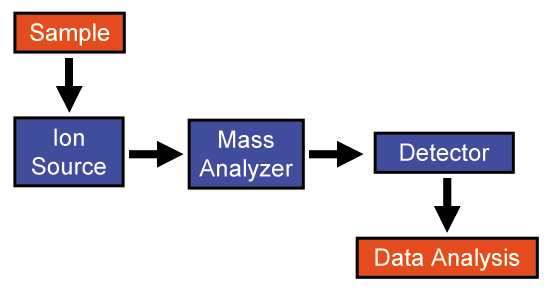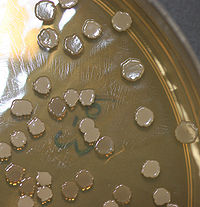Bacteria are abundant in soil, water, and air as well as in the depths of the Earth's crust, organic matter, and live animals or plants. They are also abundantly social -- among themselves and with others. Not only do they interact with each other but also with their host. Bacillus subtilis and Streptomyces coelicolor are two examples from daily life. The former would be involved with the ropiness of spoiled bread. But the well-known Streptomyces produce the soil's earthy aroma and flavor and the majority of today's antibiotics.
Pieter Dorrestein and his team -- Yu-Liang Yang and Yuquan Xu -- at the University of California, San Diego (UCSD) have colloraborated with Paul Straight of Texas A&M University (TAMU) on a new approach to visualize bacteria communicate with one another. Translating metabolic exchange with imaging mass spectrometry [IMS] describes their research in Nature Chemical Biology: "We have developed a mass spectrometry–based method that enables us to visualize both the spatial and temporal production of numerous metabolites from a single bacterial species and to observe the effects of multiple microbial signals in an interspecies interaction."

Pieter Dorrestein: Assistant Professor, the Skaggs School of Pharmacy and Pharmaceutical Sciences and the Departments of Pharmacology,
Chemistry, and Biochemistry at UCSD and member, Center for Marine Biotechnology and Biomedicine at the Scripps Institution of Oceanography
Left: Colonies of Bacillus subtilis grown on a culture dish. (Credit: Wkipedia)
Right: Graphic by Jeramie Watrous (UCSD). Two colonies of bacteria and their false-color images.
Bottom: Colonies of Streptomyces coelicolor, secreting blue actinorhodin antibiotic. (Credit: John Innes Centre)
In the graphic above (right) you see at the center a photograph of two colonies of bacteria and on either side their false-color images that were made with a mass spectrometer. Some of the bacterial products are also shown at the top along with molecular formulas.
The UCSD/TAMU team told us how to study an interaction between two species of bacteria in a new way and provided direct evidence that Bacillus subtilis silences the defensive arsenal of Streptomyces coelicolor. Their approach relies on adaptation of MALDI-TOF imaging technology to observe secondary metabolite production from bacteria cultivated on a thin layer of agar on top of the MALDI plate.
The essential steps in measuring with a mass spectrometer
Credit: Wikipedia
Bacteria interactions are now expressible in terms of molecules that can be seen in laboratory conditions for the first time since R. Muller named Streptomyces coelicolor as Streptothrix coelicolor about a century ago. Below is a picture of bacteria talking. The optical photograph of the colonies appears at the top. Red and green colors indicate the small molecules surfactin and SapB, respectively. We see timecourse data on surfactin inhibiting S. coelicolor's SapB production -- and aerial hyphae formation.

Seeing bacteria talk - the colors are the molecules used by bacteria
to communicate. Red, surfactin. Green, SapB. (UCSD)
Dorrestein et al. used IMS to observe chemical interactions between Bacillus subtilis and Streptomyces coelicolor to validate their method. IMS gave "accurate identification of small-molecule metabolites based on their mass with sufficient sensitivity to detect ions across the entire grid." A new era began with this experimental development in understanding complex bacterial interactions.











Comments